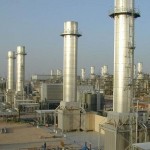The US dollar distanced further from three week-lows against the Russian ruble, after it became clear Russias biggest trading partner, the EU, and the US will increase economic pressure on the country in response to the annexation of the Crimean peninsula.
USD/RUB hit a session high at 36.486 at 06:00 GMT, after which consolidation followed at 36.424, adding 0.17% for the day. Support was likely to be received at March 20th low, 36.018, while resistance was to be encountered at March 18th high, 36.609. On March 19th, the pair touched 35.895, the weakest level since February 28,
The Micex Index of shares lost as much as 2.7%, after adding 0.1% yesterday. The index also declined 7.6% last week.
The European Union leaders announced that they will add 12 more individuals to their list of Russians and Ukrainians hit with asset freezes and travel bans, bringing the total number 51 Russian and Ukrainian politicians and military commanders penalized by the currency bloc. The EU decision comes after the US penalized 20 individuals yesterday, Russian policy makers and business leaders, which were said to have links with Russian President Vladimir Putin, by the US administration.
In what turns out to be the worst conflict since the end of the Cold War, as Russia is just on the verge of annexing Crimea and continues to mass troops close to Ukraines eastern border, the US and the European Union are trying to coordinate their response as they press Vladimir Putin to back down.
“We’re taking these steps as part of our response to what Russia has already done in Crimea,” President Barack Obama said at the White House yesterday, cited by Bloomberg. “We’ve been working closely with our European partners to develop more severe actions that could be taken if Russia continues to escalate the situation.”
Meanwhile, greenbacks demand was supported after it became clear that manufacturing activity in the Philadelphia region rebounded in March after a drop in the previous month. The index, based on a survey among purchasing managers, revealed that companies reported increases in overall activity, new orders and shipments in March. The sub-indexes of future activity indicates that firms expected continued growth and employment over the next six months.
The corresponding Philadelphia Fed index, the broadest measure of manufacturing activity, rose from a reading of -6.3 in February to 9.0 in March.





